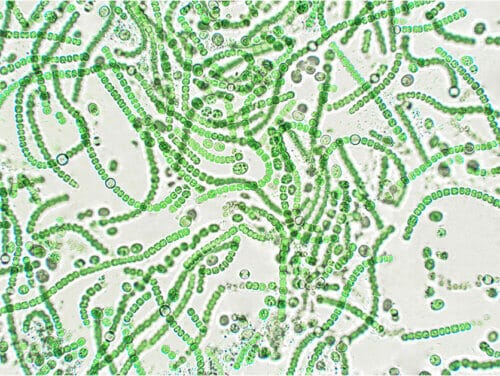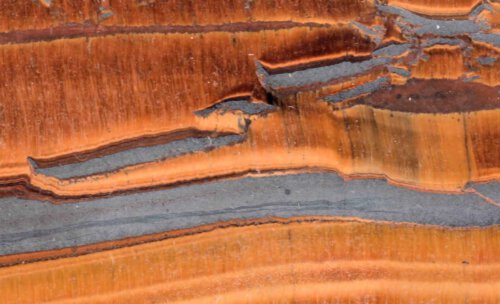By tracing the evolution of proteins, Weizmann Institute of Science scientists have charted the history of oxygen availability on Earth and solved a long-standing scientific puzzle

About two and a half billion years ago, our planet went through one of the biggest revolutions in its history: from zero oxygen concentration in the atmosphere to the ubiquitous availability of the molecule. The "oxygen revolution" - also known as the "oxygen catastrophe" - exterminated most non-aerial (anaerobic) species, but at the same time enabled the development of breathing creatures, including humans. Although this is a defining event in the history of the Earth, there is a debate among scientists as to whether this is indeed a revolution, that is, a rapid, radical and sudden change, or whether in fact the creatures living on Earth already knew how to create and use oxygen, to one degree or another, many years before. Weizmann Institute of Science scientists They recently solved the long-standing riddle And they showed that the ability of living things to process oxygen preceded the oxygen revolution by more than half a billion years.
Prof. Dan Toufik, from the Department of Biomolecular Sciences of the Weizmann Institute of Science, explains that the dating of the oxygen revolution is indisputable, which is supported by geological findings. There is also no dispute that the oxygen emitted into the atmosphere during the oxygen revolution originated from the development of bacteria that used photosynthesis to produce energy and emitted oxygen as a byproduct of the process. The focus of the scientific debate is, therefore, whether life on Earth was exposed to oxygen and knew how to use it even before the oxygen revolution. In this debate, some claim that molecular oxygen (O2), that is, free oxygen molecules, could not have been available before the oxygen catastrophe, since the chemical composition of the atmosphere and the oceans before the oxygen revolution was such that every oxygen molecule that was released in photosynthesis immediately produced a chemical reaction, that is, it did not remain free. Others argue that it is still possible that some of the oxygen remained free long enough for living things to learn to use it - even before the oxygen revolution.
Prof. Tufik's research group does specialize in the evolution of proteins, but research student Yagoda Yablonska suggested that this specialization could help solve the scientific puzzle of the history of oxygen use. In other words, she hypothesized that by using methods that make it possible to trace how and when various enzymes evolved, it is also possible to find out when living things began to process oxygen.
Jablonska first created a list of about 130 enzyme families that use or produce oxygen in bacteria and archaeons (ancient bacteria), since these are the life forms that characterized the archaicon - the geological era between the appearance of life on Earth about 4 billion years ago and the oxygen revolution. After sifting through about half of them, Jablonska was left with enzyme families in which the use or emission of oxygen characterizes most or all of the family members. Of the remaining families, she selected 36 whose evolutionary genealogy could be fully traced. "It was of course far from simple," says Prof. Toufik. "Genes can be 'lost' in certain organisms, thus giving the false impression that they evolved later in other organisms. In addition, bacteria transfer genes between them horizontally, thus messing up the genealogy and may lead to an overestimation of the age of the enzyme."

The genealogy created by the researchers clearly presented an evolutionary outbreak of the appearance of oxygen enzymes about three billion years ago - more than half a billion years before the oxygen revolution; Some enzymes even evolved earlier. "It is believed that in order for enzymes that use oxygen to appear, the presence of oxygen is necessary," says Prof. Toufik. "Therefore, our findings confirm the hypothesis that oxygen appeared and persisted in the biosphere long before the oxygen revolution. It did take time to reach the higher level of oxidation that characterized the oxygen revolution and left its geochemical record, but when it happened, oxygen was already known to many creatures on Earth."
Oxygen is one of the most chemically reactive elements. This fact makes it very useful for many life forms, but also has great damage potential. Jablonska and Prof. Toufik hypothesize that bacteria that produced oxygen, and other microorganisms that lived in their environment, had to quickly develop ways to efficiently get rid of oxygen. This is how enzymes appeared designed to remove oxygen molecules from the cells. However, one creature's waste is the potential source of life for another, and soon enzymes that use oxygen to break down "resistant" molecules such as aromatic compounds and lipids also began to evolve.
Jablonska summarizes: "Our research presents a completely new means of dating the appearance of oxygen in the atmosphere, and helps us understand how life as we know it developed."
More of the topic in Hayadan:
